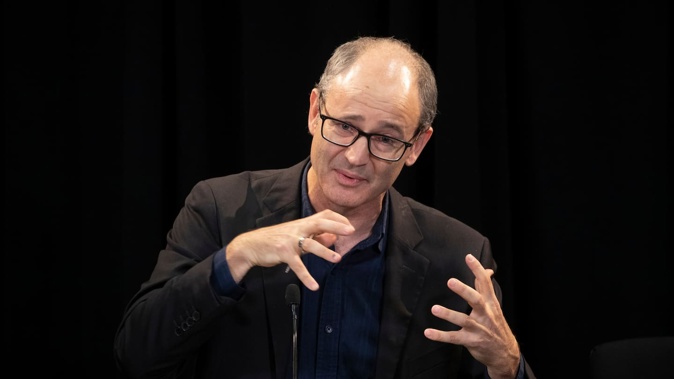
Inflation is likely to stay “sticky” for a year or two more, the Reserve Bank indicated today.
In an atmosphere of high inflation and sluggish economic growth, the Reserve Bank (RBNZ) has outlined plans to get the country back to 2 per cent inflation.
RBNZ chief economist Paul Conway delivered a speech on inflation this morning, a day before first quarter GDP results are due.
Asked if restrictive monetary policy was damaging the economy and causing people to leave for Australia, he said: “That mission is causing the economy to grow more slowly than it otherwise would, so we are experiencing some short-term pain”.
He queried whether the central bank’s policy could be blamed for people “fleeing” the country.
“Think hard before jumping,” he said, indicating that New Zealand’s long-term economic prognosis was good.
“It’s nowhere near as bad as it was a year or so ago,” he said of inflation.
Conway outlined how the Reserve Bank monetary police committee (MPC) had to keep annual Consumers Price Index (CPI) inflation between 1 and 3 per cent.
CPI inflation in the first quarter was up 0.6 per cent on the December 2023 quarter and up 4.0 per cent year-on-year.
Though not a perfect measure, the CPI is widely regarded as the most comprehensive and reliable gauge of inflation.
Conway discussed how the country might achieve 2 per cent inflation over what he called the “medium term” while avoiding unnecessary instability.
He said in most cases the MPC aimed to get inflation to 2 per cent within one to three years.
OCR strategy
 Reserve Bank Governor Adrian Orr is presiding over an era of rising inflation and interest rates. Photo / Mark Mitchell
Reserve Bank Governor Adrian Orr is presiding over an era of rising inflation and interest rates. Photo / Mark Mitchell
Conway outlined how the Official Cash Rate (OCR) was used in an inflation-fighting strategy.
“This approach recognises that changes in the OCR take time to transmit through the economy and influence inflation.”
He said the Reserve Bank did not want to cause unnecessary economic volatility by changing interest rates in response to inflation blips that would fade naturally in time.
“Growth will improve but there’s a cascading series of events working through the economy for interest rates to influence inflation.”
It could take 18 months to two years for OCR changes to meaningfully impact the economy, but he added: “If we change the OCR, markets react virtually instantaneously.”
Conway said a tight labour market and supply shortages were the biggest contributors to inflation during the Covid-19 pandemic.
But now the two most important factors in an expected non-tradeable inflation slowdown were spare capacity in the economy, and lower inflation expectations from households and companies.
Non-tradeable inflation measured final goods and services that do not face foreign competition.
“We expect spare capacity to start emerging in the economy over 2024, after several years of the economy growing well beyond its sustainable rate,” Conway said.
“We expect this spare capacity to feed through strongly into lower domesticallygenerated inflation.”
Border closures from 2020 to 2022 made the local labour market tight as workers were in short supply but reality had changed dramatically since then, Conway said. Photo / Alex Burton
As for people’s expectations, Conway said RBNZ research found that above-target inflation in recent years prompted people to pay more attention to inflation and to update inflation expectations more frequently.
“Inflation expectations - they can become self-fulfilling,” he said.
“Lower inflation expectations and a lower propensity for firms to make relatively large price increases will help lower inflation persistence.”
The RBNZ now expected disinflation to spread across a wider set of non-tradeables that typically take longer to react to monetary policy - such as restaurant meals and ready-to-eat food.
Conway said overall, good progress was being made in bringing inflation back to target.
An increasingly loose labour marker would be pivotal to that, he said.
But it seemed anybody expecting a cut to interest rates should think again.
“Overall, a period of restrictive policy is necessary to give us confidence that inflation will return to target over a reasonable timeframe.“
And despite all the research, it was still anybody’s guess when the county might climb out of the high inflation quagmire.
“These processes could occur more quickly or slowly than currently projected.”
Sluggish data
On spare capacity forecasts, Conway said: “We’ve got quite a reasonable read on what’s going on in the labour market.”
He said the country needed better economic data. Many key data releases lag real-time events and are prone to revision.
Tomorrow’s GDP data, for example, will be more than two-and-a-half months old.
“Sometimes it can be difficult to tell what’s going on.”
Take your Radio, Podcasts and Music with you









